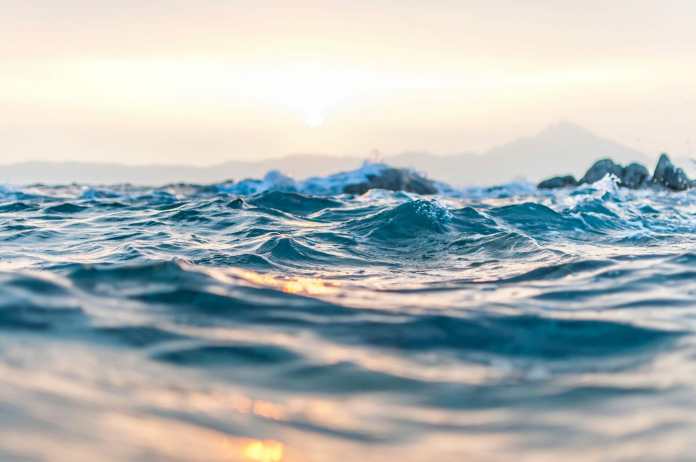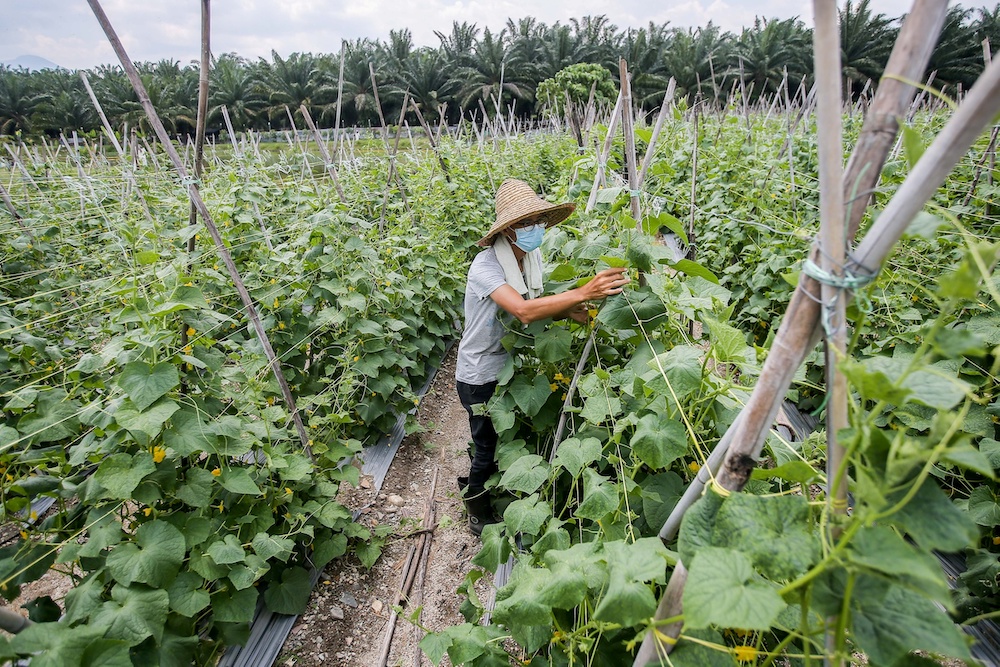
Published in Business Today, The Star & Astro Awani, image by Business Today.
A closer look at the Global Food Security Index (GFSI) 2020 shows how Malaysia’s waters and water resources are significantly at risk, jeopardising Malaysia’s ability to improve its self-sufficiency in food security. This is an outcome of Malaysia’s incumbent economic practices, and the situation calls for better water resource protection and management, and ultimately, the nationwide implementation of circular economy.
As concisely put by The Economist, “water security is food security”, and “managing water resources shapes how we feed the world today and in the future”. In this regard, we should be worried. Malaysia scored “very weak” at a mere 18.5 per cent in the “oceans, rivers and lakes” indicator, which is critically below the world average score of 60.4 per cent.
Relatedly, Malaysia received a qualitative rating of zero for a sub indicator on the risk of eutrophication, which is the enrichment of a body of water with nutrients, causing negative ecosystem change such as depletion of aquatic life and the worsening of water quality.
Starting with rivers, eutrophication isn’t a surprising outcome given that the biggest contributor to the pollution of Malaysia’s rivers are piggeries (pig farms) and sewage treatment plants (STP), both contributing to the highest pollutants in the form of biochemical oxygen demand (BOD) and suspended solids, according to a research paper by Chai Lee Goi published in the journal of Case Studies in Chemical and Environmental Engineering.
High BOD is usually a result of high organic waste. Aerobic decomposition of organic material decreases dissolved oxygen (DO) and may release nutrients, which feeds in the growth of algae and aquatic plants, which further decreases DO, resulting in death of fishes and other marine animal, effectively reducing biodiversity. The polluted water and reduced marine life are a triple-whammy impacting water, food, and ecological security simultaneously.
Under the “water” indicator, Malaysia scored 40 per cent, which is by definition considered borderline “weak” and well below the world average score of 60.4 per cent. Pollution of rivers and lakes may have consequently led to Malaysia receiving the highest risk rating of 5 for the “agriculture water quality risk” indicator, against a world average risk rating of 3.3, giving Malaysia another zero score.
This is a worrying observation as researchers have mentioned that 98 per cent of the total water use originates from the rivers. As more and more rivers transform into polluted status, Malaysia’s ability to produce food through its agriculture sector would be critically impacted given that 70 per cent of the water resources in the country are for the agricultural industry, according to researchers.
Chai’s compiled data from the Malaysian Environmental Quality Report 2017 showed that more than half of Malaysia’s rivers are not categorised as “clean”, and that the percentage of clean rivers was declining. From a total of 477 supervised rivers, a total of 219 (46 per cent) were considered clean, 207 (43 per cent) were deemed to be slightly polluted and 51 (11 per cent) were categorised as polluted.
Malaysia also received a “weak” 37 per cent sub indicator score on marine diversity, which, even though is only slightly below the global average score, is still a low score and could be attributed to extreme eutrophication of Malaysia’s rivers flowing into our oceans, perhaps compounded with unsustainable fishing practices and on top of pollution, particularly from plastics.
In a 2019 study commissioned by the World Wide Fund for Nature (WWF), Malaysia was reported to have the highest annual plastic use per capita at 16.78 kg per person, ahead of China, Indonesia, Philippines, Thailand and Vietnam. The Race for Water foundation referenced a 2010 study by Jenna R. Jambeck’s, which estimated Malaysia as the fifth biggest plastic polluter of the ocean globally, and number eighth worst in the world in managing plastic waste.
So, not only our polluted rivers are secreting eutrophication-causing pollutants and suspended solids, but it is also spewing out vast amounts of plastic waste into the ocean. According seafood industry portal for transparent and sustainable aquaculture and fishery supply chains, Seafood TIP, mentioned that fisheries and aquaculture are considered important for domestic food production and as a source of employment for coastal communities in Malaysia. It has been reported that Malaysia imports a lot of seafood, therefore, deteriorating oceans would severely impact marine food self-sufficiency level.
Water resource security issues due to increasing pollution are exacerbated by growing demand due to population growth, economic activities, and climate-change related changes in water supply. In fact, GFSI views Malaysia as having absolutely no safety net against climate-change related adaptation measures for food safety.
Malaysia received yet another zero rating for the sub indicator of climate-change related measures in GFSI, which involves the development and/or investments in “early-warning measures” and “climate-smart” agriculture practices, which would in turn explain another zero rating for national agriculture adaptation policy, which is an assessment on national climate change strategy which covers adaptation for agriculture and/or food security.
Therefore, it is clear that this goes beyond water security and water resource management. This calls for the internalisation and practice of circular economy across all sectors to minimise waste, and improve natural resource utilisation and resilience, which will require a change in the economic system spanning technology, infrastructure, policies, regulations and enforcements, society-wide awareness and participation.
Under the GFSI, Malaysia’s highest number of indicators that performed poorly with the best-performing countries in the Asia Pacific region are indicators under the dimension of “natural resource and resilience” (which is also a dimension that is proving difficult for even well-performing countries), as elucidated by Datuk Dr. Rais Hussin and Dr Margarita Peredaryenko in the article “Macro outlook on Malaysia’s food security insecurities”.
In the context of water resources, circular economy practices should also be applied across all sectors, particularly the major polluting industries. Chai referenced data from a report released by the Department of Environment (DOE) in 2018 which showed manufacturing industries, agricultural-based industries, STPs, piggeries and wet markets as the top five sources of pollution load.
STPs may require technological upgrades to minimise the level of organic and suspended solid waste to river streams. From the context of water resource security in relation to food security, application of circular economy practices in agriculture and animal husbandry are necessary to reduce pollution in waterways.
Despite the complexities of supply chains, circular economy and water security complements one another and is mutually benefitting. In fact, French transnational company focussing on ecological transformation, Veolia, proposes for an integrated water, waste, and energy approach in the circular economy, whereby water is central to the equation.
For the plastic-related manufacturing industry, WWF released a report in September 2020 proposing the Extended Producer Responsibility (EPR) scheme for Malaysia as a policy tool to promote accountability of plastic products and packaging manufacturers in the end-of-life impacts of their products, which is a crucial step towards reducing plastic waste in the oceans, landfills and incinerators and therefore, a necessary step towards circular plastics economy.
Local agencies such as the Malaysian Green Technology Corporation, which has proposed and supported EPR schemes before, should consider collaborations with organisations such as Circular Economy Asia, which has been pushing for projects such as “Waste-as-a-Resource” and “The Asian Plastics & Packaging Agreement” in Malaysia, but have not gained the traction it deserves.
The manufacturing industry should also embark on circular metals industry, together with the metal and mineral mining industry, which is in line with Prime Minister Tan Sri Muhyiddin’s call for sustainable development of mineral industry when launching the National Mineral Industry Transformation Plan 2021-2030 on April 22, as reported by Bernama.
In addition to being a central component to food security, our waters and water resources are an important part of the ecology, home to wildlife, micro-climate regulation, use in homes and industries, generation of hydroelectricity, flood mitigation, tourism and many more. It’s time to realise this as a serious national security issue, which requires it to be addressed via careful management alongside the application and enforcement of circular economy across all sectors.
Ameen Kamal is the Head of Science & Technology at EMIR Research, an independent think tank focused on strategic policy recommendations based on rigorous research.

